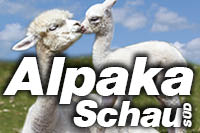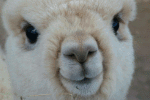Articles by Alpaca World Magazine:
Animal Welfare and the Five Freedoms
by Cristian Bonacic and Jessica Gimpel
Animal welfare,which is based on the welfare of the individual animal, embraces behaviour, physiology, husbandry and even the cultural background of the keepers and managers.
We have revised some of the basic concepts related to animal welfare and give some practical examples about camelids in South America and the UK. Camelids are extremely intelligent animals with complex behaviour and a unique physiology, not always understood by farmers or practitioners. Animal welfare is, therefore, a crucial issue to consider in any case involving domestic llamas and alpacas or wild guanacos and vicunas. Currently it is difficult to differentiate the wild from the domestic camelids. Both are under extremely variable conditions and under an array of new environments. Llamas and alpacas are found in areas from Patagonia to North America, Australia, New Zealand, Europe and the UK. Therefore they face many new challenges in their struggle to adapt.
Likewise, wild vicunas and guanacos are now captured regularly, farmed and exposed to a new array of conditions far from their natural habitats. Animal welfare, therefore, plays a critical role as an emerging science. Indeed, animal welfare is a new science that demands a more ethical point of view regarding the way we care about domestic and wild species.
Definition of animal welfare and the use and conservation of wild camelids in South America Hughes (1976) defines animal welfare as a state of complete physical and mental health in which an animal is in harmony with its environment. Carpenter (1980) proposes a working definition of animal welfare asserting that it is the state of an animal when trying to adapt to an environment imposed, or modified, by human action. This is a very important concept but one which is not widely accepted. Adaptive capabilities are determined by natural selection and are, therefore, intimately related to the natural changes in the environment in which a species evolved. In turn, the artificial selection that creates domestic animals, is partly oriented to positively select attributes that allow them to tolerate an artificial environment.
In wild species, human intervention can pose challenges for which the animals may have insufficient adaptive resources; this could lead to suffering, either because the animal cannot cope with a given situation or because its adaptive capabilities are thwarted. Suffering occurs when an animal has a subjective aversive experience that is too acute or too prolonged for it to easily cope (Dawkins, 1980).
A simple example may help: Vicuñas have two main ways of coping with the cold environment in which they live; their fleece and their mobility (Wilson, 1989). If a vicuña is shorn and kept in a pen, it loses both adaptive responses. It no longer has the insulation of the fleece and its ability to look for shelter is curtailed unless, of course, shelter is provided in the pen. Suffering may be the end result and death can be an extreme consequence (Bonacic & Gimpel, 2001; Bonacic et al., 2003).
In the United Kingdom, the concept of the Five Freedoms was developed in order to set the minimum standards that must be considered when managing farmed animals (Webster, 1995).
The Five Freedoms:
1. Freedom from hunger, thirst and malnutrition
2. Freedom from discomfort
3. Freedom from pain, injury and disease
4. Freedom to express normal behaviour
5. Freedom from fear and distress
These standards involve aspects such as housing, feeding, husbandry, disease prevention as well as control, management and slaughter. Although the concepts were developed with domestic animals in mind, the principles have sometimes been used as the starting point to design the management guidelines for laboratory animals, pets, and sport animals. In other words, for all animals that are under the care of humans. We believe it is also valid to use these Freedoms when setting appropriate standards for the handling of South American wild camelids. This seems most appropriate when we consider the human intervention involved, and the ways in which this animal has been exploited.
Applying the Five Freedoms to
Camelid Management
(see Table 1 for practical examples)
1 Freedom from Hunger and Thirst
Well-being could be compromised as a consequence of human action interfering with prey or food density or ecological niche resource availability, preventing access to watering points. Or, perhaps, by limiting the access of the animals to those resources to which they are adapted. In captivity an important issue in the altiplano is the cold and windy weather and, in the UK the extreme wet weather may cause foot rot or feet problems and long and woolly fleeces can get extremely wet if the animal lacks shelter during prolonged rainy days.
2 Freedom from Discomfort and Pain
Discomfort and pain could be caused directly by humans due to the capture system, manipulation or captivity of a wild animal. In the altiplano shearing is sometimes done with little care. Sharpened pieces of broken metallic cans or broken glass are used instead of a proper pair of scissors or shearing equipment. These malpractices can cause injuries and pain during shearing. In the UK excessive closeness with some llamas or alpacas, not necessarily accustomed to close human contact, may cause discomfort to the animals, particularly if they come from herds where that kind of husbandry was not
practiced.
3 Freedom from Injury and Disease
Injury and disease could be directly attributable to man as a consequence of hunting practices, the animal?s exposure to an inadequate infrastructure, an inappropriate management system, or by exposure, directly or indirectly, to contaminants or pathogens derived from domestic animals or humans. In addition, the close contact with conspecifics caused by confinement could also increase the risk of disease transmission and inter-animal aggression.
Some herds are held in poorly maintained facilities in the altiplano and, at times, dogs chase both the domestic and wild camelids. Feral dogs are becoming a growing problem worldwide and wild camelids in captivity, as well as domestic camelids, suffer attacks. In the USA and the UK multiple species herds, as well as the close proximity of dogs could affect the camelids? well-being. Contact with dogs and other species should be done with great care and with constant assessment of behavioural responses.
4 Freedom to Express Their Normal Behaviour
.Animals should have adequate space and ecological niche resources allowing them to perform normal behaviours such as territorial defence, use of vantage points, sleeping and feeding sites, etc. In this particular aspect some camelids may be more exposed to stress when they are treated as domestic pets.
Camelids in the wild and domestic camelids in the altiplano roam in open spaces and have little contact with humans. In the UK camelids are extremely close to people and sometimes they inhabit nearly completely artificial habitats. Camelids are quite clever and adaptable and is probable that, in many cases, they are well adapted to this kind of husbandry. However, we should take special care when new animals are introduced into artificial environments and be aware that individual behaviours are not necessarily the same in all cases. Camelids seem to be very ?reserved? in their expression but this does not mean they cannot be stressed. During handling experiences I have seen camelids nearly frozen, displaying little reaction to human approach or husbandry. However their heart rate, blood profiles and hormone tests later indicated they were extremely stressed.
5 Freedom from Fear and Anxiety
For a wild animal, this freedom implies that human contact must be kept to a minimum. There should be a protocol to assess any changes in the animal?s behavioural and/or physiological expression as an indirect measure of potential suffering due to aversion, fear or anxiety during capture or captivity. Anxiety is a very difficult parameter to measure in animals and particularly in South American camelids. Only a well trained eye and experience will help us understand when camelids are anxious. We shall assume that wild camelids under close contact with humans are always anxious to be released. Therefore handling protocols should be as quick as possible and noise factor, practical handling and facilities should be prepared to avoid stress to the animals.
Summary
The science of animal welfare commonly studies the effect different management practices or anthropogenic environmental changes may have on animals. The goal is to generate solutions to the welfare problems identified by implementing action protocols designed to improve the way in which animals are kept and managed. This will reduce the impact of these systems on the animals concerned.
Little is known about wild camelids welfare and now, with increasing numbers of vicunas and guanacos under farming and capture for shearing, we have to start tackling welfare issues. Also, the welfare of domestic camelids should always be a priority.
It seems that in the UK more animal lovers are very aware of animal welfare and many camelid breeders have a special attitude toward loving their pets. However, animal welfare should be assessed by experts in all circumstances. Never rely solely on your personal beliefs; when in doubt always consult your veterinarian.
Key References
Bonacic, C., Feber, R., Macdonald, D.W., 2006. The vicuña (Vicugna vicugna) capture for sustainable use: animal wellbeing implications. Biological Conservation 129: 543-550.
Bonacic, C., Gimpel, J., 1995. Sustainable use of South American wild camelids: theory and practice. Newsletter of the European fine fibre network 5, 23-26.
Bonacic, C., Gimpel, J., 2001. The response to productive management in the wild vicuña and its animal well-being consequences. In International Symposium in Animal production and the environment and XXVI Meeting of the Society for Animal Production, ed. F. Garcia and P. Cretton, pp 67-76.
Bonacic, C., Macdonald, D.W., 2003. The physiological impact of wool-harvesting procedures in vicuñas (Vicugna vicugna). Animal Welfare 12:387-402.
Bonacic, C., Macdonald, D.W., Villouta, G., 2003. Adenocorticotrophin-induced stress response in captive vicuñas (Vicugna vicugna) in the Andes of Chile. Animal Welfare 12:369-385.
Bonacic, C., Macdonald, D. W., Galaz, J., Sibly, R.M., 2002. Density dependence in the camelid Vicugna vicugna: the recovery of a protected population in Chile. Oryx 36:118-125.
Zapata, B., Gimpel, J., Bonacic, C., González, B.A., Riveros, J.L., Ramírez, A.M., Bas, F.; Macdonald, D.W., 2004. The effect of transport on cortisol, glucose, heart rate, leukocytes and body weight in captive-reared guanacos (Lama guanicoe). Animal Welfare 13: 439-444.
About the Authors
Jessica Gimpel, DVM, co-founder of Fauna Australis. PhD Oxford University (UK) Animal welfare specialist. Jessica was the first person in Chile to begin research on the effects of shearing wild animals. She received her MSc and PhD at Oxford working in The Animal Behavior Research Group.
Dr. Cristian Bonacic is a Director of Fauna Australis, a conservation research group based at the Pontifica Universidad Catolica de Chile, at Santiago. He is also a member of The Wildlife Trust Alliance. While pursuing his doctorate in sustainable utilisation of South American camelids at Oxford, he received the first Davis Lama Medicine Award from Ohio State University. His research expertise includes stress physiology, conservation of wild camelids and sustainable use (vicuna and guanaco). He is the Director of The Environmental Sciences Diploma and Coordinator of the first Master Science Program aimed to Wildlife Management and Conservation.
Dr. Bonacic may be reached at: Facultad de Agronomia Y Forestal, Pontificia Universidad Catolica de Chile, Casilla 306, correo 22, Santiago, Chile (ph: 56-2-686-4142 fax: 56-2- 552-9435) web site:www.fauna-australis.puc.cl e-mail: faunaaustralis@gmail.com or bona@uc.cl
Table 1. Practical Examples of Poor Well-being
1. Injuries, cuts, bone fractures and pain before death.
2. Separation of crias (young) from their mothers before the right time.
3. Long transport that causes muscle damage and body trauma that may subsequently impede proper locomotion to find food or shelter.
4. Crushing and stress of pregnant females predisposing to abortion.
5. Inability to cope with extremes of temperature hot or cold weather.
6. Exposure to unknown dogs or excessive barking.
7. Exposure to predators in fenced places.
Tweet



